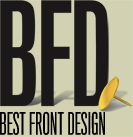|
|
| |
 See the best front pages each morning.  EDITORIAL REDESIGNS
Wyoming Tribune Eagle American News Idaho State Journal Sunday Star-Times Bakersfield Californian RepublicanAmerican The Eureka Reporter Yakima Herald Republic St. Louis Post‑Dispatch The Virginian‑Pilot Observer-Reporter The Sunday News NEWSPAPER CLASSIFIED REDESIGNS
Miami Herald
Hartford Courant Santa Fe New Mexican Yakima Herald Bakersfield Californian Brainerd Dispatch Wilson Daily Times Birmingham News Daily Press Springfield Republican The Morning Sun NEWSPAPER ONLINE DESIGN Read Steve Outing's interview with Alan Jacobson and learn why newspaper web sites are seriously flawed. Then see alternatives. EDITORIAL, CLASSIFIED & ONLINE REDESIGN  Our redesigns are catalysts for positive change. Visit the gallery to see how we've transformed publications and websites. ONLINE REDESIGNS
SunshineTimes.com
Wilsondaily.com Mydailyrecord.com blognewsnet.com Observer-reporter.com Reynolds at Reno Online Media Solutions Al Qarar HomePagesUSA Young Audiences of Virginia REDESIGN WHITEPAPER A redesign is a waste of time and money if it doesn't deliver a return on investment. Download our report to learn how to make your redesign pay off, then see how four newspapers boosted readership and revenue by following our advice. TARGETED PUBLICATIONS INTERACTIVE TOUR See in detail how a content-driven redesign did more than make a community daily look better – it made it a better paper. RADICAL STRATEGIES FOR CIRCULATION WOES |
|
|